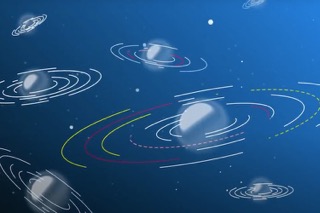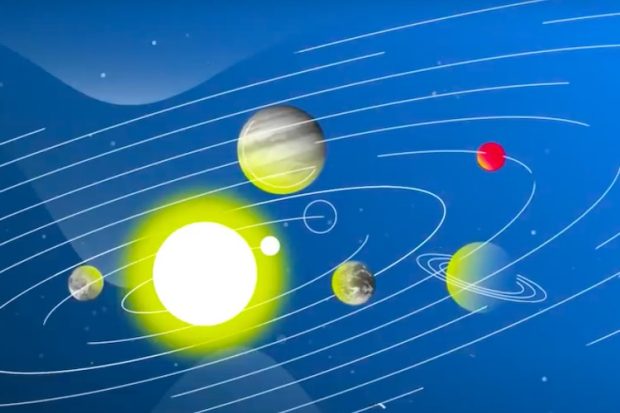Exoplanets
Astrophysicist Didier Queloz on the how to find exoplanets, their impact on astronomy, and the uniqueness of o...

On July 1, 2015, the Astrophysical Journal published a paper titled “Confirmation and characterization of the protoplanet HD100546 b – Direct evidence for gas giant planet formation at 50 au” about the study devoted to a newly arisen gas giant planet. We have asked one of the authors of this research, Dr. Sascha P. Quanz, to comment on this work.
Using the infrared camera NACO at the Very Large Telescope (VLT) Observatory in Chile we re-observed what we believe is a gas giant planet that is still in the process of formation. Two years ago we already published a first scientific paper presenting the first images of that object. Back then, however, it was unclear whether this object that appeared to be at the estimated distance of ~50 au (1 au being the distance between the Sun and the Earth) from a young star named HD100546 was actually gravitationally bound, i.e., orbiting the star, or whether it was a by-chance alignment of a faint background star. The new data now allowed us not only to show that the object is indeed bound to the central star, but because we obtained data at 3 different wavelengths we could constrain the temperature and also the apparent size of the object.

We found an estimated effective temperature of ~900 Kelvin and the radius of the object (assuming the object is spherical and has a single temperature) of ~7 Jupiter radii. These numbers together with the fact that the object is still embedded in the large disk of gas and dust surrounding the young star, strongly suggest that the object is indeed a young planet that is still growing in mass and has not fully formed yet.
It is the first time that such an object has been discovered and its picture could be taken. It allows scientists to further investigate the physical properties of young gas giant planets. In addition, the object demonstrates that gas giant planets may even form at rather large distances from their central star, which was not expected theoretically.
Searching for and finding a young planet embedded in the gas and dust disk around the young star HD100546 was only the second step. In a previous study we investigated the structure and properties of the circumsterllar disk and found first morphological indications for possible perturbing bodies embedded in the disk. Several earlier studies gave similar results. This was then enough motivation to go back to the telescope and see whether any young planet could be found.
As mentioned above, at the moment the object is unique in the sense that it is the only young planet observed that is still deeply embedded in the gas and dust disk it originated from. In the last few years two additional young planets were discovered, which appear to be in a slightly more advanced evolutionary stage as they orbit within large gaps of their host stars’ disks clearing out the material.
All of these objects are new “laboratories” for astrophycicists to study the early phases of gas giant planet formation and evolution, and various research groups around the world using different telescopes and instruments will try to learn more about the physical and chemical properties of these objects. In addition, our group as well as others will continue to search for more young planets around other young stars to increase the sample size and get a better understanding where, when and how gas giant planets form.

Astrophysicist Didier Queloz on the how to find exoplanets, their impact on astronomy, and the uniqueness of o...

New Science paper reveals a large-scale structure inside a stellar explosion and brings us closer to the under...

A possible formation of a planet is observed near the star in the HD 100546 system